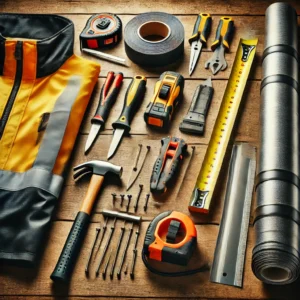
A waterproof work jacket is an essential piece of gear for anyone working outdoors in wet conditions. These jackets are designed to keep the wearer dry and comfortable, regardless of the elements they face. With various materials and technologies available, selecting the right jacket can make a significant difference in productivity and safety.
In addition to keeping rain and moisture out, a quality waterproof work jacket often features breathability and durability. This combination ensures that while the wearer stays dry, they also maintain comfort during long hours of outdoor work. Understanding these features helps in choosing the most suitable jacket for specific needs.
Investing in a waterproof work jacket not only enhances performance on the job but also safeguards health. When it comes to prolonged exposure to harsh weather, having the right protective gear is crucial for preventing complications such as hypothermia or illness. Knowing the benefits of a waterproof jacket can lead to better-informed decisions when selecting work attire.
Essential Features of Waterproof Work Jackets
Waterproof work jackets must contain specific features to ensure durability, protection, and comfort. The following aspects are crucial in selecting the right jacket.
Material and Waterproofing Technology
The material used in waterproof work jackets is vital for effectiveness. Common options include nylon, polyester, and Gore-Tex. These fabrics often feature a durable water repellent (DWR) coating that enhances water resistance.
Waterproofing technology may include laminated membranes or single-layer waterproof coatings. Laminated membranes provide a barrier against moisture while allowing for breathability. When choosing a jacket, check the waterproof rating, often measured in millimeters. A rating of 10,000 mm or higher indicates excellent protection from heavy rain.
Breathability and Ventilation
Breathability is essential to prevent moisture buildup inside the jacket. Many work jackets incorporate ventilation mechanisms like mesh-lined pits or adjustable vents. These features allow air circulation without compromising waterproof capabilities.
Look for jackets with moisture-wicking linings that pull sweat away from the body. Proper ventilation helps maintain comfort during intense activities. A balance between waterproofing and breathability ensures the wearer stays dry from both rain and sweat.
Durability and Abrasion Resistance
Durability is key in work environments. Waterproof work jackets should resist wear and tear from heavy use. Fabrics like Cordura nylon add strength and protect against abrasions.
Reinforced seams and double-stitching enhance jacket durability, preventing water from seeping through vulnerable areas. Consider jackets with tear-resistant materials to withstand rugged conditions. Checking for a warranty or manufacturer’s reputation can also indicate durability.
Hood and Collar Design
The hood and collar functionality significantly affect weather protection. Adjustable hoods ensure a secure fit, minimizing water entry during rain. Some jackets offer detachable hoods for versatility based on conditions.
A high collar provides additional protection against wind and rain, often featuring fleece lining for comfort. Look for designs with adjustable features to customize fit and coverage. A well-designed hood and collar can greatly enhance the jacket’s overall effectiveness in adverse weather conditions.
Choosing the Right Waterproof Work Jacket
Selecting the appropriate waterproof work jacket involves a few critical factors. These include ensuring a proper fit for comfort, considerations for safety and visibility, and understanding the necessary care and maintenance.
Fit and Comfort
A waterproof work jacket should fit well to allow ease of movement. When trying on jackets, individuals should ensure that they can comfortably stretch their arms and bend at the waist without feeling restricted.
Key considerations for fit:
- Size: Choose the correct size based on chest and waist measurements.
- Layering: Consider extra room for base layers in colder conditions.
- Adjustability: Look for adjustable cuffs, waist, and hoods for a personalized fit.
Comfort is also significantly affected by the jacket’s weight and breathability. Lightweight materials enhance comfort, while breathable fabrics help prevent moisture buildup inside the jacket.
Safety and Visibility
In many work environments, visibility can be paramount for safety. A waterproof work jacket should offer high visibility features. Neon or reflective colors increase the chances of being seen in low-light conditions.
Important safety features include:
- Reflective strips or panels: These enhance visibility during nighttime or poor weather.
- Bright colors: Yellow, orange, or other vivid shades stand out in various environments.
- Stand-up collars and hoods: They provide additional protection from weather while keeping the wearer visible.
Selecting jackets with these features can significantly improve safety in hazardous work situations.
Care and Maintenance
Proper care extends the life of a waterproof work jacket and maintains its effectiveness. Regular cleaning and appropriate storage are essential. Many jackets require specific washing instructions to avoid damage.
Care tips include:
- Follow washing instructions: Most jackets can be machine washed, but some require hand washing or special detergents.
- Reapply waterproofing: Over time, waterproof coatings can wear off, so periodic reapplication is necessary.
- Dry properly: Air-drying is often preferable to prevent shrinkage or damage from high heat in dryers.
Following these recommendations ensures that the jacket remains functional and comfortable for extended use.
Vaishno Devi VIP Darshan Ticket Price: An Overview for Pilgrims
When planning a pilgrimage to Vaishno Devi, many visitors seek information on the VIP dars…